The batteries are heated poorly individual heating in the apartment. What to do if the batteries in the apartment do not heat
You can not understand why not heating the radiator? Dont be upset. We will help your grief. Just read this article and follow our instructions. We are sure that after this your battery will work as it should.
Do not heat radiators
Why do not heat the batteries in the apartment - diagnosis and localization of problems
Batteries (radiators) are mounted in heating systems with forced or natural circulation of coolant (in most cases - water), heated by the boiler. Therefore, the only reason for the low temperature of the battery is the cessation of the inflow of the heated coolant.
The following defects in the heating system can provoke a disturbance in the circulation of the coolant:
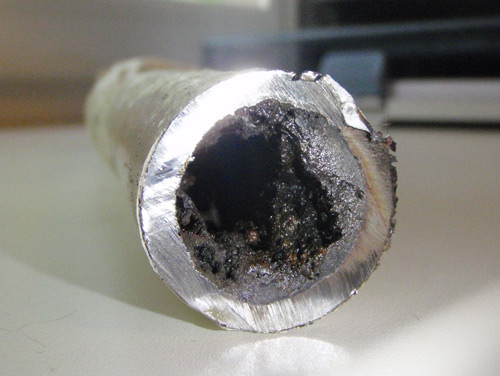
In short, if your battery does not heat well - locate the problem, find the cause of the breakdown and proceed to fix it.
Ways to eliminate the problem of "cold radiator"
The presence of an airlock in the battery forces one to act as follows:
- The circulation pump is switched off first. . After all, the excess pressure of the coolant in the system can prevent the elimination of the air pocket in the battery. If the radiator is connected to central heating, this recommendation can be ignored.
- Further Mayevsky's crane opens mounted into the radiator from the side of the free upper fitting. The valve is opened by simply turning the valve clockwise. And close, respectively, the rotation of the valve in the opposite direction. If there is no tap, the cap is folded at the same end.
- After that, you will hear a characteristic hiss upon completion of which water will flow from the tap or the ajar plug. Therefore, before manipulating with a tap or plug under the edge of the battery, you need to substitute some kind of capacity.
- In the final you close the faucet and turn on the circulation pump.
After some time, you should monitor the results of the work done - touch the battery and assess its temperature. If the battery is warmer - you did everything right. True, it does not warm up quickly, so - have patience.
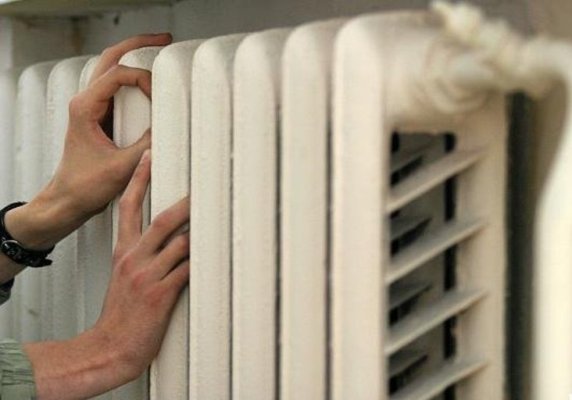
Touch the radiator
An insufficient amount of coolant is restored by supplying water to an open expansion tank or filling a hydraulic accumulator built into a closed system.
Moreover, the injection of an additional portion of water into a closed system is as follows:
Turn off the circulation pump
- Air is released from the accumulator. To do this, click on the pin of the nipple.
- At the highest point of the wiring opens the valve for air bleeding.
- A shut-off valve opens on the connecting wiring and plumbing lines. Water will enter the system directly from the water supply and will fill the wiring until it flows out of the open valve to bleed air.
- After that, it is necessary to close the valve for air bleeding and the shut-off unit on the fluid supply line from the water supply system.
- In the final, the volume of air in the accumulator is restored by monitoring the pressure level in the system with a manometer.
If after the done manipulations your batteries become warmer - you have eliminated the detected defect. However, after receipt of a fresh portion of the coolant increases the likelihood of air pockets in the body of the radiator itself. How to fix this problem we have discussed above.
Independent elimination of congestion in pipes is possible only if you have a plumbing discharge or experience as a plumber. Therefore, the elimination of this problem is better to shift on the shoulders of professionals.
After all, to eliminate this problem, you need to disassemble the dangerous area and clean the pipe. After that, all dismantled elements will be replaced or replaced with new fittings.
![]()
Inspection specialist
Similarly, should be done in the case of erroneous, in your opinion, connecting the battery to the wiring. Whether you connected it yourself or entrusted such work to some woe masters - it doesn’t matter anymore - just show your wiring to another heating specialist. Perhaps you were mistaken or the masters who assembled your system. And only another specialist will notice this error.
Radiator failure after repair
If your heating radiator does not heat up after repair, then the most likely cause of such a defect is either a system airing or an error when connecting the battery to the wiring.
After all, the replacement or repair of radiators takes place with partial pumping of the coolant from the system. Well, after supplying water to the wiring, the risk of air pockets in the battery increases by almost an order of magnitude.
Therefore, adding water to the system after the repair, do not forget to open the plugs or Mayevsky taps, controlling the filling of the batteries along the stream of water flowing out of the battery through the valves. If the moment is missed, then air traffic jams will have to be fought using the methods described above.
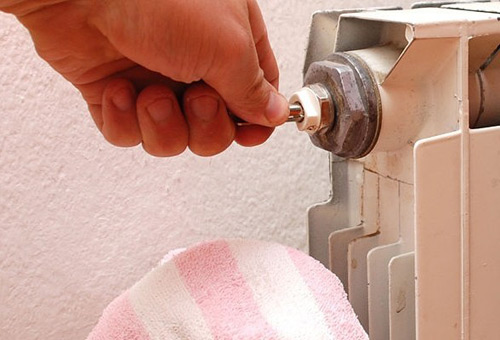
We let the air out of the system
Errors connecting the radiator to the system are possible only in the case of non-professional installation. An inexperienced "home master" can overestimate their skills and abilities. To eliminate the consequences of such errors, you will have to call an experienced professional to the house who is able to audit the layout and fix the error of the previous “master”.
You suddenly began to notice that the battery heats up poorly, the room warms poorly, does not give off enough heat? The reason for this problem is the same: hot water does not flow fully or partially into the heating radiator. Of course, a qualified master can quickly solve the problem, but is it worth it to immediately ring the bells? Perhaps to start to try to figure out yourself?
The battery does not warm well
It may seem trivial, but first it is worth checking whether there is hot water in the apartment, or if the faucet is locked for its receipt. Perhaps the riser is temporarily closed due to an emergency or repair situation in one of the neighbors.
There are also frequent situations when the battery in the apartment does not heat up due to the fact that the occupants from the upper floor did not correctly install the valve on the radiator. Thus, the temperature in their apartment will be very comfortable, but people living below will be left without heat.
Unfortunately, unprofessional plumbing work often causes cold batteries in neighboring apartments. Keep in mind, you have full civil right to appeal to the tenants on the floor above with a simple question: what about the heat in their house? In the case of their mistakes, utilities will certainly restore justice.
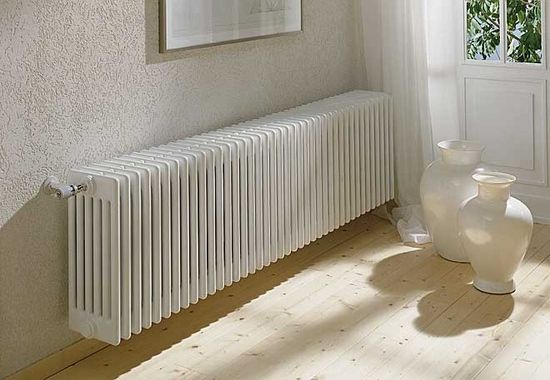
Why the battery does not warm: frequent causes
If the neighbors are okay, the riser is hot, and your house is still cold, then the problem is directly related to the radiator:
- The battery section is clogged. Scale, salt, rust and other impurities tend to be deposited on the inner walls of the sections. Passages for the coolant are drastically narrowed, and in such conditions normal circulation is impossible
- Single pipe system. Such a system has a fundamental flaw: long-distance batteries will be cold, until they are practically not heated
- Airlock. The air accumulated in the upper compartment of the radiator forms a kind of plug, almost completely paralyzing the circulation of the coolant. Characteristic is also the rapid appearance of corrosion in the "airy" places.
- Wrong connection. Often, the batteries do not heat precisely because of poor handling when connected. If mistakes are made, only a part of the radiator will be active (for example, the bottom)
- Low pressure If there is very little pressure in the central heating system, then the water flow in the battery is weak. That is, the room receives much less heat than it should
Where to go if the batteries are not warm
If you could not solve the problem yourself, you should immediately contact the management company with a request for poor heating. Alternatively, you can call the dispatch service serving the house. But in this case it is better to record the date of the call and the personal data of the operator. Typically, a caretaker technician (or company engineer) should appear on the same day to determine the problem. After making a control measurement of temperature, the technician will draw up an act in two copies (the second for the owners). If complaints are justified, the problem will be resolved in the near future.
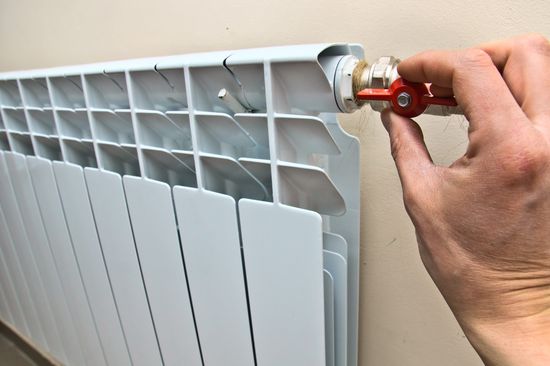
If the cause of the cold in the house really became a faulty radiator, you should contact the housing and communal services. A regular plumber must come to you, determine the cause of the breakdown and eliminate it. In the case when neither one nor the other service provided proper assistance, there is a hotline. The operator on duty will take your complaint, explain the situation and tell you where to go next.
Often, residents of multi-storey buildings are faced with a problem when the heating battery stops heating. To start the repair you first need to find the source of the problem. There may be several reasons, as a result, and methods for its elimination may also differ.
Air traffic jam - what to do?
The formation of an airlock in the battery is a common problem. As a rule, air can accumulate at the top of the radiator. To eliminate this problem in modern heating devices, a special faucet is used, which has a two-millimeter opening for air release. He is called the "crane Mayevsky." After turning the tap, a slight hiss will be heard. At the time of the water supply valve must be closed.
Note! In some cases, it is recommended to hold the tap open for some time, as air can often come out with water.
However, prudence should be exercised here. If you let the water down for a long time, the volume of coolant can significantly decrease in the system. Therefore, it will be effective to re-air after a certain period of time.

If the apartment still uses cast iron batteries, then they do not have a Mayevsky crane. What to do in this case? To do this, you must use a pipe connection. The process of work is complicated and unpleasant, since with this option a large amount of coolant will be spilled. When performing this task it is necessary to carefully handle the thread. The thread can be either right or left. When unscrewing the clutch should not put a lot of effort, as you can break the thread. Turn the threaded coupling carefully and smoothly. As soon as air hissing is audible, it is enough to turn off the clutch. As soon as water flows, the coupling must be returned to its reverse position.
Note! When tightening the coupling, it is recommended to use a sealant, for example, fum-tape or tow. A few turns will suffice and the connection will not flow over time.
And what to do if there is no heat in the last radiator? Usually from the last battery pipe goes to the expansion tank. Then, most likely, a blockage formed in this section of the pipe. Correct the situation can be time-consuming and difficult work on cleaning the pipe. But first of all, you need to make sure this is a problem or not. Therefore, first, the permeability of the pipe is checked.
Connection Error
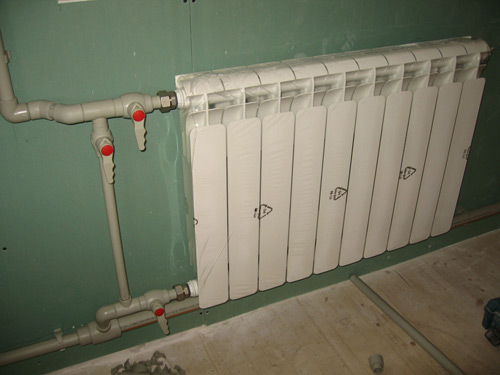
The reason that the radiator does not heat may be errors in the installation of heating equipment.
- Incorrect use of bypass. The bypass is a special adapter that connects the output and flow of coolant to the tubes of the battery. Its installation is carried out directly in front of the radiator. This is due to the fact that if necessary, the battery can be easily and quickly dismantled. The reason that the battery does not heat up may be that the bypass is in the open position as a result of incorrect circulation.
- Wrong choice of heating system: two or one pipe. The lack of heat may be in the wrong calculation of the number of batteries, pipe diameter and type of heating system. As a result, the energy of the coolant will simply be missed.
There are no hopeless situations, so the problems described above can be solved with the assistance of a qualified specialist.
Does not heat after repair
The battery may not be warm immediately after repair. How to determine the problem? Here a big role will be played by what exactly has changed in the apartment. For example, pipes can be sewn up with drywall. When installing the profile pipe can touch it. As a result, this item will absorb the heat that must be sent to the radiator. That is, the heat will be distributed in the space between the draft wall and the drywall. What to do in this situation? To do this, check at which level the battery was heated before repair. If after repair it warms weaker, then the cause should be quickly eliminated.
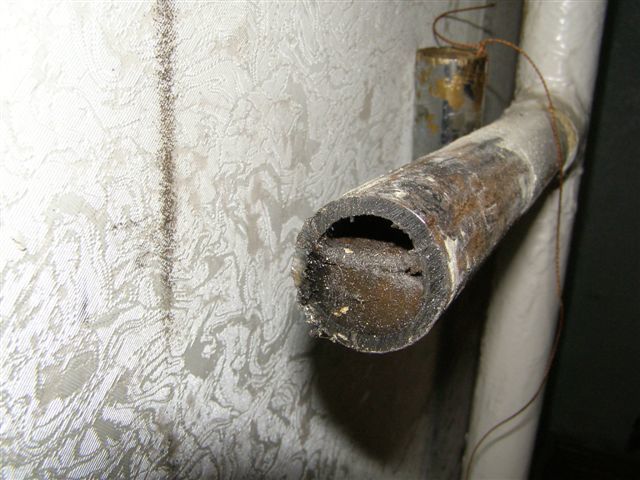
The reason for the insufficient heat of the battery may be in the blockage. The blockage is explained by the fact that after a long period of heating operation, the internal diameter of the pipes could be significantly reduced due to the appearance of rust. As a result, it may be that there is no space in the pipe for circulating the coolant flow. In such cases, you will need to perform work on cleaning the battery or on their full replacement. To clean or replace the radiator, shut off the coolant supply on the bypass. In this case, the entire system will continue to work. If you manage to do only cleaning, you can use the following tips:
- It is important to remember about safety, as the coolant can be very hot.
- Cleaning should be carried out only under high water pressure.
- Before re-installing the radiator, check the pipe connections, it is possible that there is also a blockage at the junction that can be cleaned.
- It is recommended to clean the radiators all at once.
Possible other reasons

Each individual case when the heating equipment does not heat is unique. Sometimes the reason can be very commonplace. If centralized heating is used, it may have temporarily turned off the heating. In this case, taking any action is useless. You just need to wait for the problem to be fixed in the boiler room.
If the last radiator does not heat, then it most likely does not reach heat. Accordingly, it is necessary to review the performance and circulation power of the coolant in the heating system. In this case, you need to check the pump, as it can not cope with the load.
Other problems can help solve the expansion tank. How? If the problem is in airing, the coolant can be driven through the entire system by a pump. To do this, when installing the entire heating, you can make a special valve on which the faucet fitting is installed. On it the hose is put on, and water moves. After that, you must wait until the water squeezes the air through the expansion tank.
Note! This method is very risky. Water can fill the expansion tank. Therefore, without a partner here can not do. One will run the water, and the second will check the water level in the tank.
After carrying out all these actions, the system can again properly heat.
The case of the master is afraid!
So, as you can see, the heating system can be fraught with a large number of tricks and tricks. It is not always possible to immediately navigate what to do. If you never had to understand the problem of why the radiator does not heat up, then, most likely, it will be useful to watch a useful video that tells you about one method of troubleshooting. In this case, you can solve the problem yourself and without the involvement of specialists.
